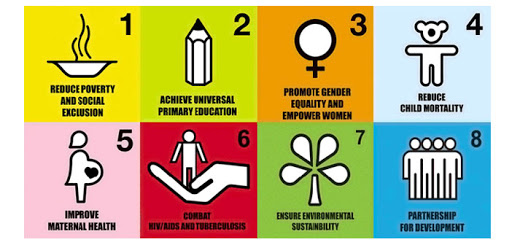The world is ailing,
The Sirens are wailing,
Beep-beep one too many lives are gone,
Of mass graves filling the earth,
Furnance in the crematoriums are raging,
Covid-19 is rippling the world,
The cake is crumpling,
Its a race against time, tick-tock.
I have never known anything so dreadful all my life, I bet you too. Perhaps we saw the coming of Covid -19 but never did it cross our minds how it would be a defining global health crisis and the most confronting challenge of 2020 until God Knows when.The ruins and scars of Covid-19 will still hold the future in doom and gloom. Covid-19 has non-discriminatively taken away our life’s spices**#StayHome#SocialDistance#Sanitize#MaskUp#WashYourHands** may be our shield and defence. As a new normalcy, it holds the potential of devastating economy, ruin political and social-cultural sphere to a fall. Times are tough, we are stressing over uncertainty everyday, yet we just have to hang on there buddies. I have been a little bit out of topic…this was important too. I am relived, the chock is off my throat.
Sexual and Reproductive Health and Rights-Integral and Sensitive Yet Controversial
On one hand, sexual and reproductive health is integral and sensitive, on the other, it is the most controversial of all international human rights issues. All the participating countries at the International Conference on Population and Development recognized sexual reproductive health as a fundamental right to individuals, couples as well as social and economic development for communities of all nations. Thus, the conference focus shifted from family planning programmes to placing women at the core of an approach that integrated reproduction, health, human rights and socioeconomic empowerment.
Although the Millennium Development Goals don’t explicitly refer to sexual reproductive health, at least three of the eight Goals -3. Promote gender equality and empower women, 4.Reduce child mortality and 5. Improve maternal health. They relate to sexual and reproductive health and rights.Other international human rights instruments among them Convention on the Elimination of All Forms of Discrimination against Women, (CEDAW) and Universal Declaration of Human Rights, International Covenant on Economic, Social and Cultural Rights informs of the main principles behind shaping human rights, particularly, equality, non-discrimination, autonomy, integrity, dignity and individual well-being.

The Millennium Development Goals was successful and uneven because of inequalities. China is the most successful country in achieving Goal 1, followed by India for substantial progress in Goal 2, 4 and 8.
Understanding the Magnitude- Feeling the Pinch
Women’s health has unique implications, but why and how? Firstly, women’s health needs are specific and relate to their sexual and reproduction function. Second, women’s elaborative reproductive system is vulnerable to disease, prior to function or in the aftermath. Third, women suffer the same diseases of other body parts that can affect their sexual health. It’s worth noting the complexity at this point as disease patterns differ because of hormonal environment, lifestyle behavior and genetic composition, not to forget diseases of other body systems and how their treatment poses risks to their reproductive systems or function. Fourth, women are social, subjecting them to social diseases that affect their social, mental and physical states. The impact of these is an incomplete state of physical, psychological and social well-being in all matters relating to the reproductive system. The magnitude is a clear link between women’s rights, struggle to health conceptions and social justice that eventually and negatively affect equity, participation and rights.
108 years to close the gender gap…the rebirth of human rights…
Reports by various organisations, health facilities, governments and other stakeholders paint a picture of a continent that should stretch further to secure sexual and reproductive health and rights.With the prevalence of modern contraceptives, still 1.1 billion of the 1.9 billion women of reproductive age (15-49 years) worldwide cannot access family planning (World Health Organization). The magnitude of this affects other aspects of a women’s life such as education, economic participation, social relations, gender equality, maternal health and sexually transmitted diseases. Further, the disparity in contraceptive accessibility between the developed and developing countries is wide notwithstanding the general global improvement in more family planning services and socioeconomic status.
Human Rights Version of Paul’s Thorn in the Fresh?
These inequalities, which remain as an intractable obstacle have deprived poor women the right to protect themselves not only from unintended pregnancies but also other most threatening and unwanted situations. Inequality is depictable in socioeconomic classes-mortality and morbidity rates are higher in Africa and Asia. Children born in the two continents as from 2015 have a 25 % possibility of celebrating their fifth birthday compared to those born in the 1960 (Department of Economic and Social Affairs of the United Nations). Core to this improvement is a shift from predominantly infectious causes of death because of chronic and degenerative diseases. Public education and health have driven this transition in socioeconomic development and recognized as the most significant achievements. The Millennium Development Goal 4 committed to reduce child mortality by two-thirds between 1990 -2015. Recently, target 3.2 of the Sustainable Development Goals aims to reduce mortality rates of under five to 25 deaths in 1000 births by 2030. The disparities in mortality rates between and within countries require policies to redress inequalities in the living standards of children.
The Crossroad
Maternal mortality is the death of a woman while pregnant or within 42days after a pregnancy termination, irrespective of duration or site of pregnancy, from any cause related or aggravated by the pregnancy or it management but not from accidental or incidental causes ( World Health Organization). Maternal mortality is highly preventable. Unfortunately, each year women die of high blood pressure, haemorrhage, postpartum depression and unsafe abortion, and these are just a tip of the iceberg. For instance, in 2017,810 women died of pregnancy related complications every day in the world. Most of these deaths (94%) occurred in low socioeconomically disadvantaged regions. Fragile States Index confirmed Democratic Republic of Congo, South Sudan, Central African Republic, Zimbabwe, Guinea, Somalia and Ethiopia as a “very high alert” with highest maternal mortality rates. Maternal mortality rate is also highest for adolescent girls under 15 years. Girls of age 10-19 years are more predisposed to unintended pregnancies and childbirth complications compared to 20-24 years (World Health Organization).
Neonatal and maternal care have remained low in marginalised regions across Africa. In Kenya, the ratio is approximately 342 per 100,000 deaths live births.
Women and girls pay a heavier price for humanitarian crisis; the explosion of Covid-19 has not spared them. In Kenya all learning institutions were shut down as a containment measure. The lock down took effect mid-March and by June, 152,000 school girls were pregnant, with 40% increase each month prediction. Machakos County was the most hit with 4,000 pregnant girls (Government Managed Health Information Systems). A number of factors have contributed to this prevalence- restricted movements have hindered accessing sexual and reproductive health services and information, strain on healthcare systems that has deprioritized women and girl’s needs, the closure of schools has cut off girls from teachers leaving them in the hands of their unchaperoned parents risking the pleasures of peer pressure, poverty whereby girls engage in transactional sex, forced marriages, access to internet and social media- some communities still hold to the social norm and cultural practices that marriage, motherhood and childbearing are proof of femininity, existing challenges such as unfriendly youth reproductive health services, lack of sex education at home and school and some parents trade their girls in exchange of material gains. This is a glare to eroding the gains of the past years especially in education, health, economy and opportunities. Further, it is a manifestation of gender -based violence and gender disparities.
